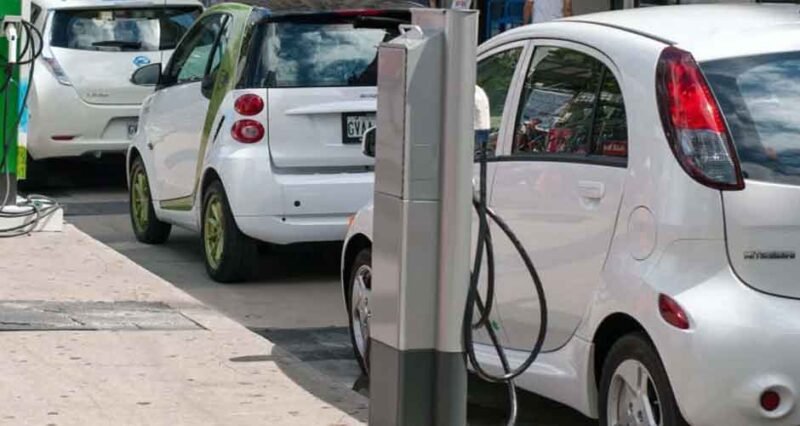
Electric Vehicles (EVs) have revolutionized the way we think about transportation, combining environmental friendliness with cutting-edge technology. A key aspect of EV ownership is charging, where Level 2 charging stations have emerged as a game-changer. Unlike their Level 1 counterparts, Level 2 chargers offer faster and more efficient charging, making them indispensable for EV users. This article delves into the myriad ways Level 2 charging stations are maximizing EV efficiency, from faster charging times to broader accessibility.
Understanding Level 2 Charging Stations: A Leap in EV Charging Technology
A Level 2 charging station represents a significant leap in electric vehicle charging technology. Operating on a 240-volt system, similar to what powers large household appliances, these stations can charge an EV battery much faster than the Level 1 chargers, which work on a standard 120-volt home outlet. Typically, a Level 2 charger can replenish an EV battery in just a few hours, as opposed to the overnight charging often required with Level 1 units. This efficiency not only enhances user convenience but also plays a crucial role in extending the battery life of EVs.
The adoption of Level 2 charging stations is bolstered by their increasing accessibility in public spaces, workplaces, and residential areas. This widespread availability enables EV owners to charge their vehicles conveniently, reducing range anxiety and encouraging more people to consider EVs as a viable alternative to traditional gasoline-powered cars. The impact of Level 2 charging stations extends beyond mere convenience; they are pivotal in the global shift towards sustainable transportation.
Boosting Battery Health and Longevity Through Efficient Charging
The efficiency of Level 2 charging stations significantly contributes to the health and longevity of EV batteries. Unlike the slower Level 1 charger, Level 2 chargers maintain a more consistent and optimal charging flow, which is crucial for battery health. This consistent charging reduces the stress on the battery, thereby decreasing the likelihood of battery degradation over time. Improved battery health directly translates to longer battery life and better vehicle performance. Additionally, the faster charging times reduce the need for frequent charging sessions, further minimizing wear and tear on the battery. As a result, EV owners can enjoy an extended range and more reliable performance from their vehicles, ensuring a better return on their investment in electric mobility.
The Environmental Impact: Reducing Carbon Footprint
The adoption of Level 2 charging stations is instrumental in reducing the carbon footprint associated with electric vehicles. By providing faster charging, these stations encourage the use of EVs, which inherently emit less pollution compared to traditional vehicles. Additionally, the efficiency of Level 2 chargers means less energy is wasted during the charging process, leading to a decrease in overall electricity consumption. This is particularly significant as the electricity grid becomes increasingly powered by renewable sources. The cumulative effect of these factors is a substantial reduction in greenhouse gas emissions, cementing the role of Level 2 charging in fostering a more sustainable and environmentally friendly approach to transportation.
Enhancing Public and Home Charging Infrastructure
The rise of Level 2 charging stations is pivotal in enhancing both public and home charging infrastructures. For public spaces, the installation of these chargers at malls, offices, and communal areas significantly increases the convenience for EV drivers, encouraging broader adoption of electric vehicles. In residential settings, the option to install a Level 2 charger at home transforms the EV charging experience from a lengthy process to a swift, overnight routine. This expansion and improvement in charging infrastructure are crucial in addressing range anxiety, a major barrier to EV adoption, and in making electric vehicles a practical option for a wider range of consumers.
The Economic Advantages: Cost-Effectiveness of Level 2 Charging
Level 2 charging stations not only offer environmental and convenience benefits but also present significant economic advantages. Despite the higher initial installation cost compared to Level 1 chargers, Level 2 stations are more cost-effective in the long run. The faster charging times mean less time spent at charging stations, leading to reduced labor costs for commercial fleets and more efficient time management for individual users.
Future Prospects: Integrating Smart Technology with Level 2 Charging
Looking ahead, the integration of smart technology with Level 2 charging stations is set to revolutionize EV charging further. Smart chargers, capable of connecting to the Internet, can provide real-time data on charging status, enable remote control, and facilitate dynamic pricing based on grid demand. This technology paves the way for more efficient energy use, aligning EV charging times with renewable energy availability and lower electricity rates. The potential for these chargers to interact with smart home systems and grid operators also opens up possibilities for enhanced energy management, contributing to a more resilient and sustainable energy ecosystem.

